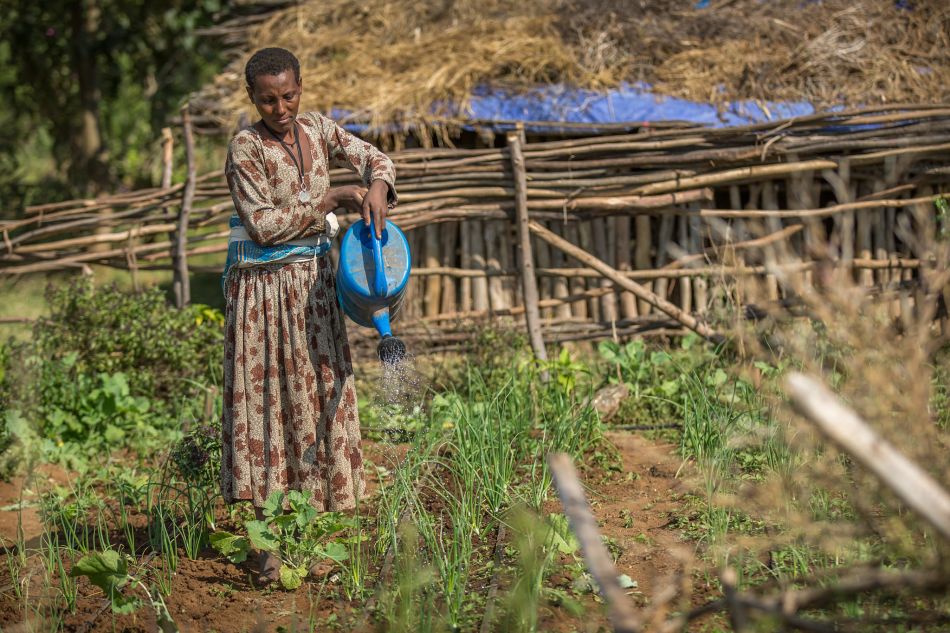By Muhammad Khalifa & Youssef Brouziyne
The MENA region experiences severe water scarcity due to complex and interconnected drivers such as increasing populations, climate change, and the excessive use of water resources. Managing water resources effectively necessitates consistent and thorough observation of the various elements of the water cycle, which can be a burdensome and expensive task for developing nations. It is well established that there is a strong correlation between the locations experiencing worsening water scarcity issues and the areas where essential water data is lacking.

The use of public domain datasets in water resource management
Water monitoring and assessment are essential in addressing serious water scarcity issues in countries like Morocco and Jordan within the MENA region. The primary agricultural regions of the countries are experiencing serious water scarcity caused by frequent dry spells, excessive water extraction, and inefficient irrigation practices. Inadequate monitoring of the elements of the water cycle, particularly rainfall and actual evapotranspiration, impede effective water resource management.
Public domain datasets, especially those from remote sensing, provide a transformative tool for these areas, supplying crucial and free data needed for water resource management. The accelerating rate of development in satellite and sensor technologies, along with advanced processing algorithms, has led to a rapid increase in the generation of remote sensing data, surpassing its practical use in solving real-world issues. This abundance of data provides numerous opportunities to transform the management of water resources.
Publicly available datasets for rainfall, such as CHIRPS, GPCC, and MSWEP, and for actual evapotranspiration, like WaPOR, SSEBop, and MOD16, are commonly used in water resource management. Satellite data can also be used to estimate the amount of rainfall, water consumed and the efficiency of water usage. Incorporating satellite information enables the tracking of water storage fluctuations, analysis of groundwater decline, and assessment of the effects of water management regulations. During the last decades many data sources that provide important information for the different elements of the water cycle have merged. Yet, this progress brings its own challenges, making it a double-edged sword.

IWMI’s work to minimize dataset biases
Although these data sources and others provide valuable information for water evaluation, these datasets also introduce discrepancies and biases because of different spatial resolutions, sensors, and production algorithms, among other factors. These datasets usually exhibit significant variations in performance across different time and space domains. If not appropriately dealt with, these discrepancies may result in major errors in water evaluations. Conducting rigorous inter-comparisons, validations, and calibrations and identifying and correcting these biases is essential to fully utilize public-domain data. Reducing data uncertainty is necessary to transition from raw data to impactful actions. Preventing significant errors will guarantee the accuracy of conclusions drawn and decisions made. The International Water Management Institute (IWMI) is conducting extensive research in different regions of the globe, including MENA, to understand patterns of similarities and differences between these datasets and minimize their biases. IWMI’s work contributes significantly to bridging the widening gap between the rapid production rate of these datasets and their actual usage for accurate and effective water assessment and modelling.


The procedure of comparing, validating, and calibrating public domain products includes multiple stages. Initially, it is necessary to compare multiple datasets (e.g., several rainfall products) to recognize their similarities and inconsistencies in time and space. This includes examining the data and their behaviour from pixel level to regional level, depending on the purpose of water evaluation and scale. It also involves studying the assumptions of the data, and analyzing how these datasets behave with changes in controlling factors like elevation and vegetation cover. Correlation is useful for spotting differences, which are then confirmed through correlation with observations done on the ground. Data obtained from the ground serves as a reference point for correcting errors and verifying the precision of satellite information. This rigorous procedure aids in decreasing biases and enhancing the accuracy of water evaluations. Although it can be a tedious process, understanding and minimizing uncertainties in these datasets is an extremely rewarding process that maximizes their usefulness for making decisions about water resources.

Accurate data is important for water security
Precise, timely, and thorough water evaluations promote improved management and planning of limited water resources, thus guaranteeing their sustainable utilization. In an area facing water scarcity such as MENA, accurate data is crucial for ensuring water, food, and energy securities, mitigating climate shocks, promoting economic growth, and ensuring environmental sustainability. Discovering and resolving uncertainties and inconsistencies in public-domain datasets can have significant advantages for MENA and other areas. Improved water management practices, guided by accurate water assessments that are based on verified and high-quality data, result in more resilient agricultural systems, decrease water-related disputes, and elevate the quality of life for millions in the MENA region. Through thorough comparisons, validations and adjustments of remote sensing data, we offer valuable information for sustainable water management. These initiatives not only tackle immediate water management issues like the lack of data, but also lay the groundwork for a more secure water future in the MENA region and beyond.


